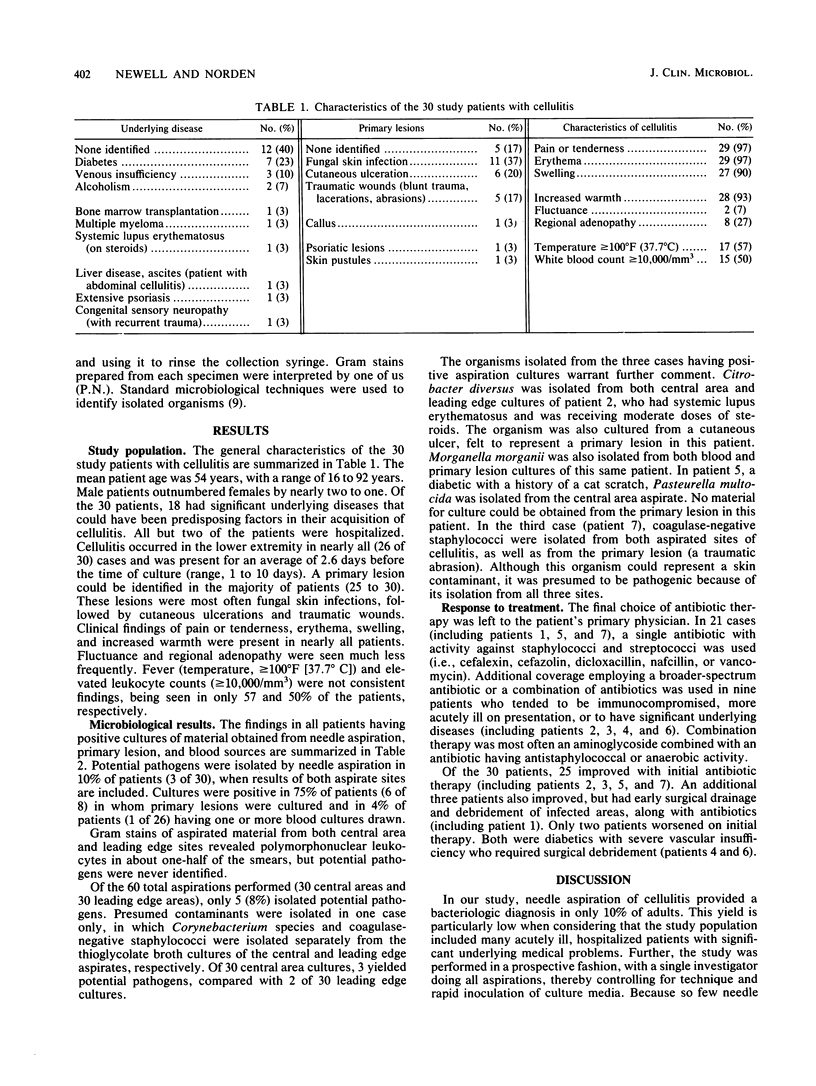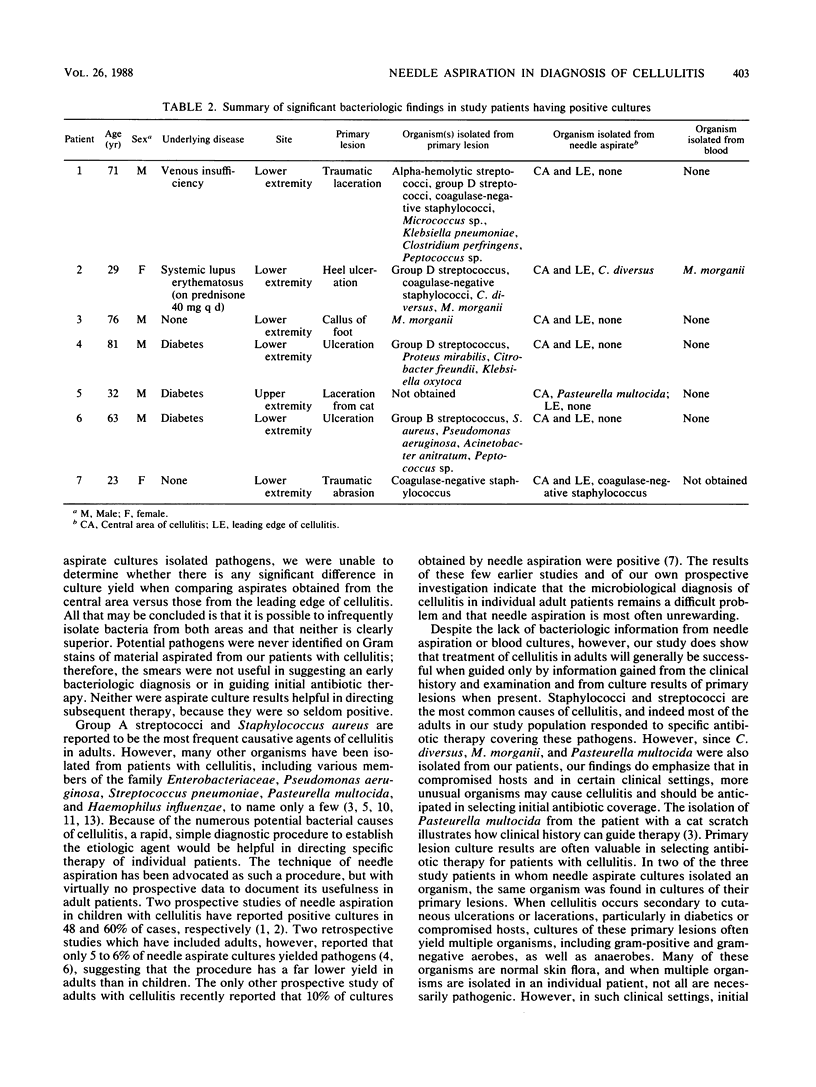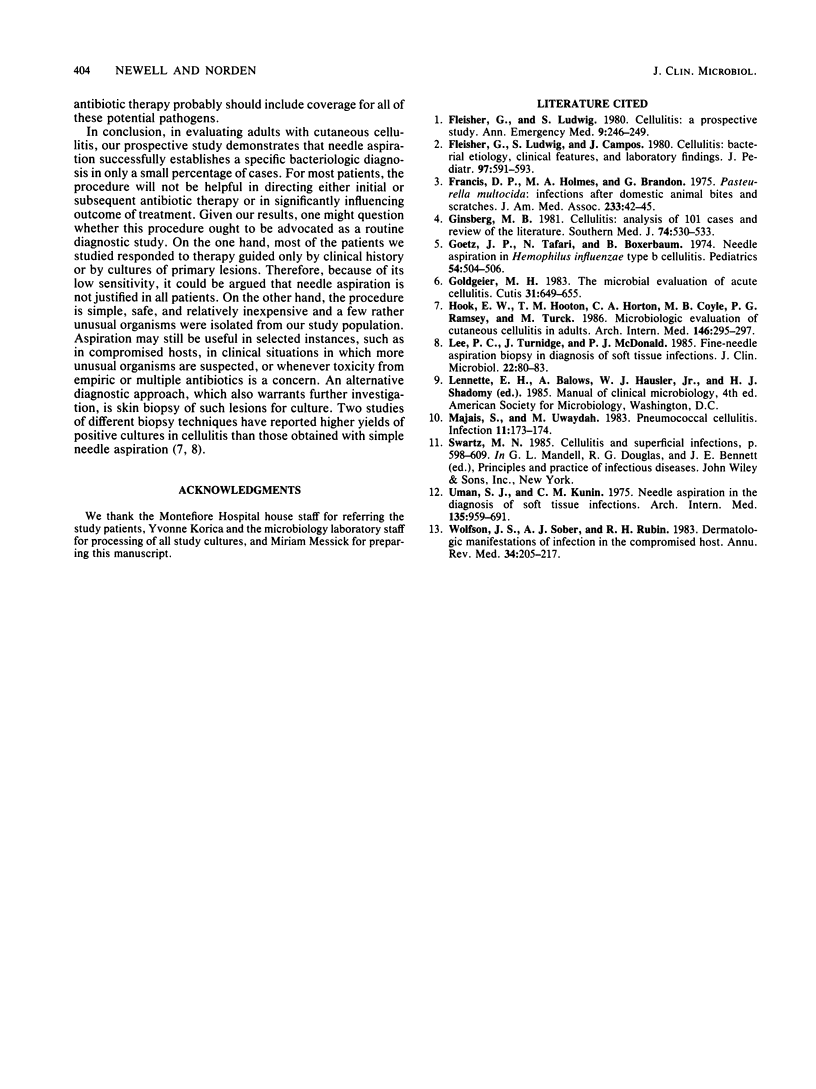Abstract
We prospectively studied 30 adult patients with cellulitis, including many who were hospitalized with significant underlying medical problems. Needle aspiration of both central and leading edge areas of their lesions was performed in an attempt to establish a bacteriologic diagnosis. Potential pathogens were isolated by this technique in only 10% of the patients. Neither site of aspiration was clearly superior in terms of culture yield. Because aspirate Gram stains and cultures so rarely provided useful bacteriologic information, they were seldom helpful in guiding antibiotic selection or in influencing the outcome of treatment in most patients. However, clinical information, as well as results of primary lesion cultures when obtainable, may be used to successfully select therapy in most cases of adult cellulitis. On the basis of our results, needle aspiration may not be justified as a routine diagnostic procedure for all adults with cellulitis, though it may still be useful in selected patients.
Full text
PDF



Selected References
These references are in PubMed. This may not be the complete list of references from this article.
- Fleisher G., Ludwig S., Campos J. Cellulitis: bacterial etiology, clinical features, and laboratory findings. J Pediatr. 1980 Oct;97(4):591–593. doi: 10.1016/s0022-3476(80)80014-x. [DOI] [PubMed] [Google Scholar]
- Fleisher G., Ludwig S. Cellulitis: a prospective study. Ann Emerg Med. 1980 May;9(5):246–249. doi: 10.1016/s0196-0644(80)80380-5. [DOI] [PubMed] [Google Scholar]
- Francis D. P., Holmes M. A., Brandon G. Pasteurella multocida. Infections after domestic animal bites and scratches. JAMA. 1975 Jul 7;233(1):42–45. doi: 10.1001/jama.233.1.42. [DOI] [PubMed] [Google Scholar]
- Ginsberg M. B. Cellulitis: analysis of 101 cases and review of the literature. South Med J. 1981 May;74(5):530–533. [PubMed] [Google Scholar]
- Goetz J. P., Tafari N., Boxerbaum B. Needle aspiration in Hemophilus influenzae type b cellulitis. Pediatrics. 1974 Oct;54(4):504–506. [PubMed] [Google Scholar]
- Goldgeier M. H. The microbial evaluation of acute cellulitis. Cutis. 1983 Jun;31(6):649-50, 653-4, 656. [PubMed] [Google Scholar]
- Hook E. W., 3rd, Hooton T. M., Horton C. A., Coyle M. B., Ramsey P. G., Turck M. Microbiologic evaluation of cutaneous cellulitis in adults. Arch Intern Med. 1986 Feb;146(2):295–297. [PubMed] [Google Scholar]
- Lee P. C., Turnidge J., McDonald P. J. Fine-needle aspiration biopsy in diagnosis of soft tissue infections. J Clin Microbiol. 1985 Jul;22(1):80–83. doi: 10.1128/jcm.22.1.80-83.1985. [DOI] [PMC free article] [PubMed] [Google Scholar]
- Mujais S., Uwaydah M. Pneumococcal cellulitis. Infection. 1983 May-Jun;11(3):173–174. doi: 10.1007/BF01641300. [DOI] [PubMed] [Google Scholar]
- Uman S. J., Kunin C. M. Needle aspiration in the diagnosis of soft tissue infections. Arch Intern Med. 1975 Jul;135(7):959–961. [PubMed] [Google Scholar]
- Wolfson J. S., Sober A. J., Rubin R. H. Dermatologic manifestations of infection in the compromised host. Annu Rev Med. 1983;34:205–217. doi: 10.1146/annurev.me.34.020183.001225. [DOI] [PubMed] [Google Scholar]


